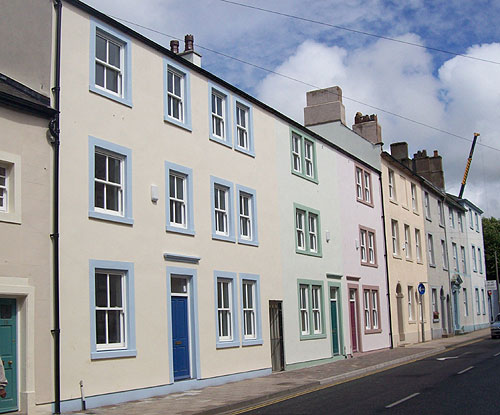
This year saw two new housing developments for Irish Street. The above photo shows the street between Cross Street, at the far end, and the James Street. The first three houses with the blue, green and red doors are new builds and abut seamlessly with the other houses on the street. Though built with modern materials and techniques their facades with sash windows and classical proportions fit in well with the Georgian houses on this block, including the one at the far end built for Matthias Read, the famous painter, in the early 1700's.
Farther up the street an even more ambitious housing project started on what was once the site of a garage and motor showrooms, which was last the Studholme and Dickson, Hyundai dealership. After the business had collapsed due to financial difficulties the site was left vacant and neglected for some time and the one storey, glass fronted building had always been inconsistent with the rest of the street. W.R. Richardson obtained planning permission to develop the site into 27 apartments but a preliminary study by the AOC archaeology group found remains of the old brewery below the modern concrete. Planning permission required a full archaeological survey, which was carried out at the beginning of 2008.
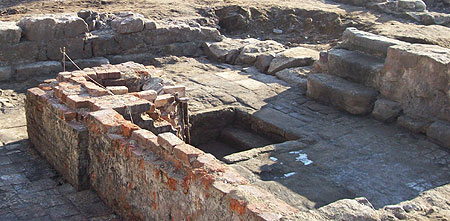
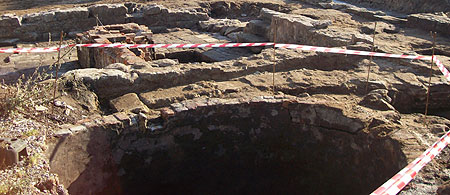
The archaeologists discovered the original flagged floor layer of buildings surrounding a cobbled courtyard. The photos show steps leading down to what looks like a brick built furnace and an adjacent large brewing vat sunk into the ground. The buildings date back to the 18th century and were known as Low Brewery in contrast to the High Brewery at the top of Scotch Street. In the 1901 directory we have listed under brewers: Spencer, Henry and Co. Ltd., Irish Street and in that directory it is referred to as Old Brewery which is also the name on the 1925 map. In 1947 it lists under Brewers: Lewis, Ed. Lloyd and Co., 10 Irish St. The layout of the brewery is clearly marked on John Wood's map c.1830 and back in 1811 we have: Harrison, Thomas Esq. merchant, banker, and brewer, Irish Street.
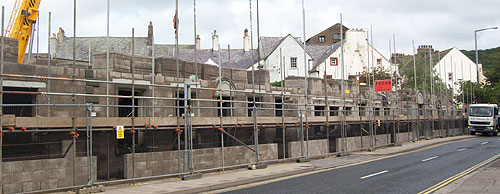
Bevelled quoin stones and arched doorways can been seen as the ground floor structure is completed which echoes the design of houses on Scotch Street further up the road. Again although the face might look old and familiar the construction is modern, with much steelwork and concrete floors, requiring the use of large hydraulic cranes.
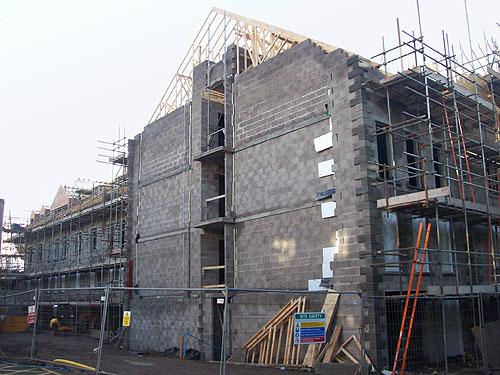
By December the roof was going on the Irish Street apartments. This was quite a complicated design with several gable ends at different levels to give the appearance of several separate buildings rather than one large block. This view is from the around the back, off Irish Street, where garages have been placed at ground level.
2009
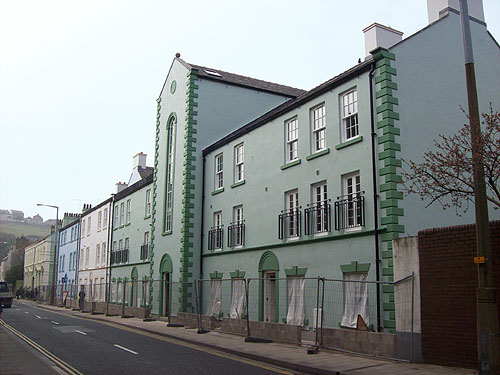
In April the scaffolding was removed to reveal the splendid Georgian style facade that will grace Irish Street. Elements of the detail appear on other houses in the street producing a building that blends naturally with its surroundings. The paintwork and roofline have been used to divide its appearance into several buildings rather than one massive block.
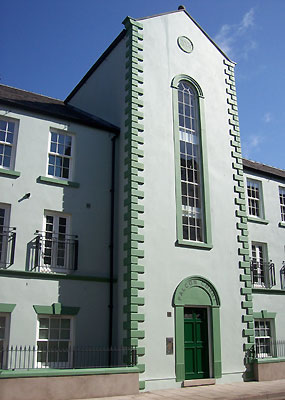
This central tower with its long arched window providing natural light to the staircase above the main door is very attractive.
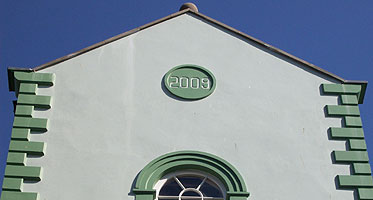
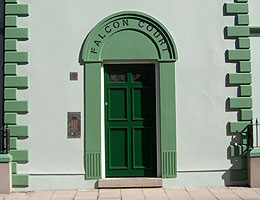
The finishing touches such as the date roundel and the name above the door state the intentions of building that built to last.
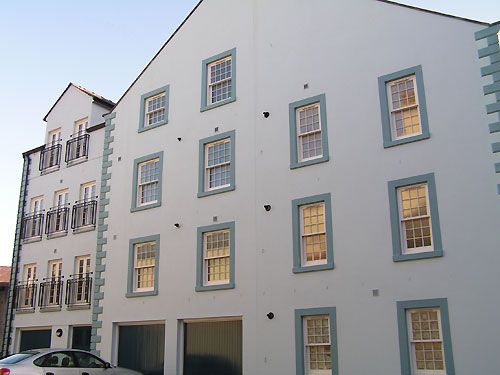
At the side it is possible to see how they architect has created a building with three storeys on the Irish Street side that has four storeys at the rear allowing for garages on the ground level.
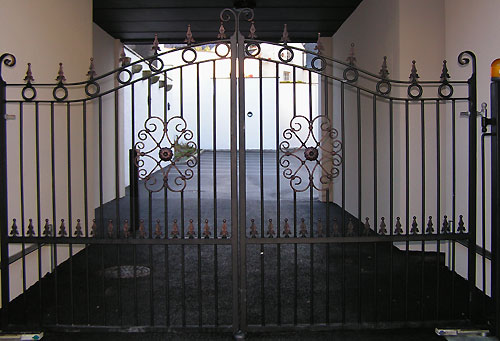
At the rear an enclosed courtyard provides extra parking and is secured by these beautifully crafted wrought iron gates.